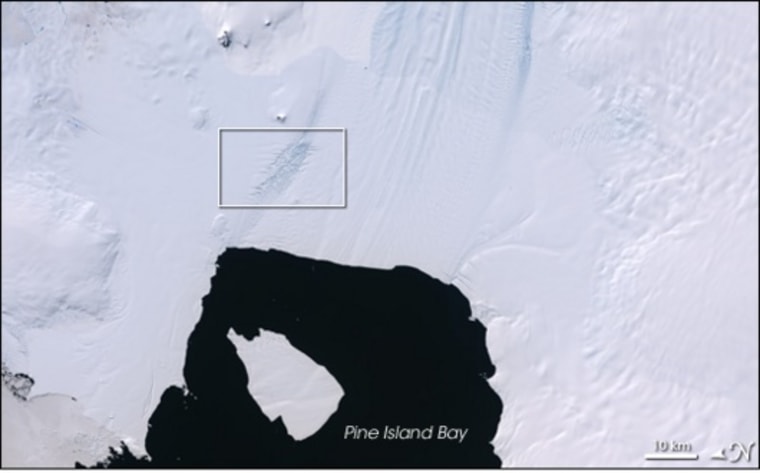The Arctic and Antarctic regions are warming faster than previously thought, raising world sea levels and making drastic global climate change more likely than ever, international scientists said on Wednesday in summarizing a new report on recent research efforts.
The melt is particularly worrisome in West Antarctica — and not just the Antarctic Peninsula but all along the vast coastline.
"The warming we see in the peninsula also extends all the way down to what is called West Antarctica," said Colin Summerhayes, executive director of the Britain-based Scientific Committee on Antarctic Research and a member of International Polar Year's steering committee. "That's unusual and unexpected."
Summerhayes and others summarized the preliminary findings from hundreds of studies done for the International Polar Year. Scientists from more than 60 countries have been conducting intense Arctic and Antarctic research over the past two southern summer seasons — on the ice, at sea, and via icebreaker, submarine and surveillance satellite.
The preliminary IPY report stated that "it now appears certain that both the Greenland and the Antarctic ice sheets are losing mass and thus raising sea level, and that the rate of ice loss from Greenland is growing. New data also confirm that warming in the Antarctic is much more widespread than it was thought prior to IPY."
That data includes a study last month in the journal Nature that found West Antarctica had warmed nearly twice as fast as East Antarctica.
Antarctica's average annual temperature is still 50 degrees Fahrenheit below zero, the study said, but that has increased by about 1 degree F since 1957.
Glaciers moving faster
The biggest West Antarctic glacier, the Pine Island Glacier, is moving 40 percent faster than it was in the 1970s, discharging water and ice more rapidly into the ocean, Summerhayes said.
The Smith Glacier, also in West Antarctica, is moving 83 percent faster than it did in 1992, he said.
All the glaciers in the area together are losing a total of around 114 billion tons per year because the discharge is much greater than the new snowfall, he said.
"That's equivalent to the current mass loss from the whole of the Greenland ice sheet," Summerhayes said, adding that the glaciers' discharge was making a significant contribution to the rise in sea levels. "We didn't realize it was moving that fast."
The glaciers are slipping into the sea faster because the floating ice shelf that would normally stop them — usually 650 to 980 feet thick — is melting.
"There's some people who fear that this is the first signs of an incipient collapse of the West Antarctic Ice Sheet," Summerhayes said.
Sea level predictions too low?
Summerhayes said sea levels will rise faster than predicted by the U.N. Intergovernmental Panel on Climate Change.
A 2007 IPCC report predicted a sea level rise of 7 to 23 inches by the end of the century, which could flood low-lying areas and force millions to flee. The IPY group said an additional 3.9 to 7.8 inches rise was possible if the recent, surprising melting of polar ice sheets continues.
Summerhayes said the rise could be much higher.
"If the West Antarctica sheet collapses, then we're looking at a sea level rise of between 1 meter and 1.5 meters (3 feet, 4 inches to nearly 5 feet)," Summerhayes said.
Ian Allison, co-chair of the International Polar Year's steering committee, said many scientists now say the upper limit for sea level rise should be higher than predicted by IPCC.
"That has a very large impact," Allison said, adding that extremely large storms that might previously have occurred once in a year would start to occur on a weekly basis.
The IPY researchers have also found:
- that the Southern Ocean around Antarctica has warmed about 0.36 degrees Fahrenheit in the past decade, double the average warming of the rest of the Earth's oceans over the past 30 years.
- larger-than-expected pools of carbon in Arctic permafrost, or frozen terrain, which further warming could release into the atmosphere in the form of greenhouse gas.
The IPY was organized by the independent International Council for Science and the U.N.'s World Meteorological Organization.
